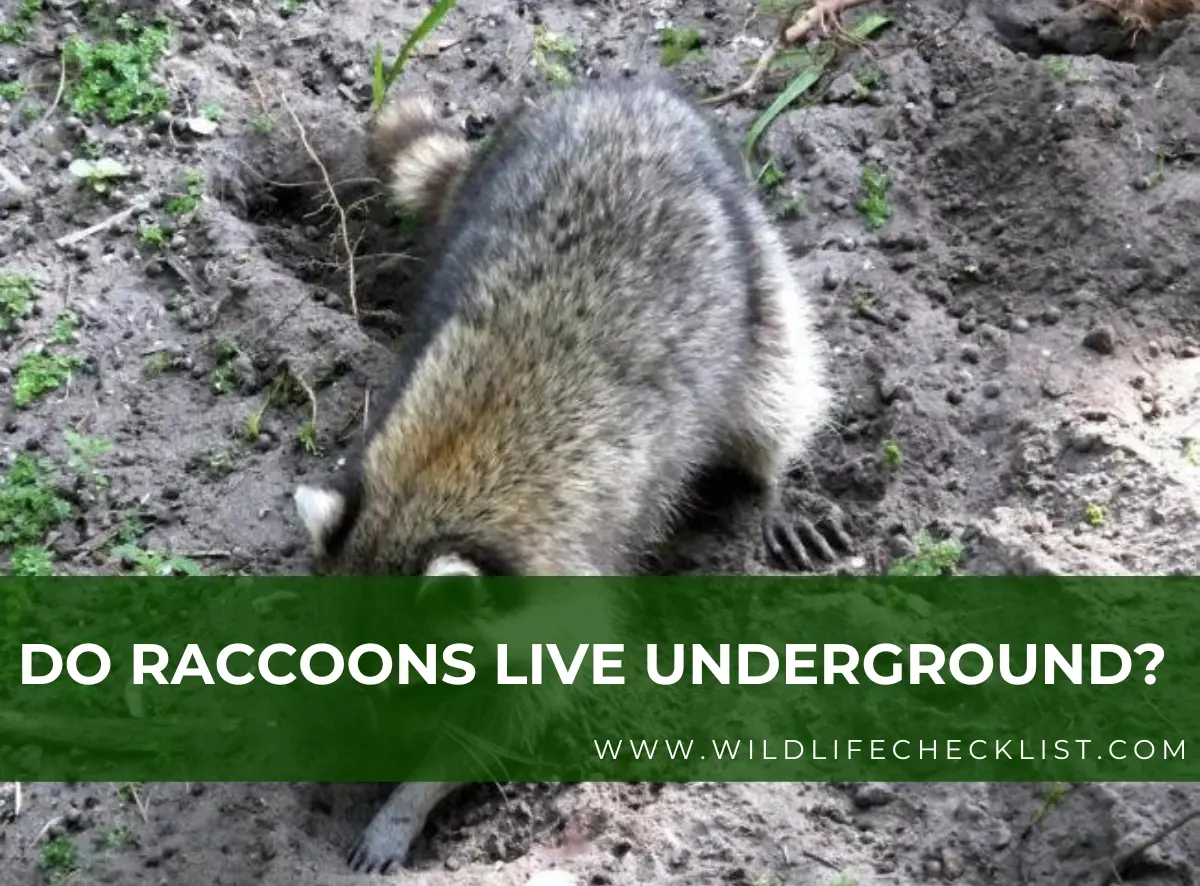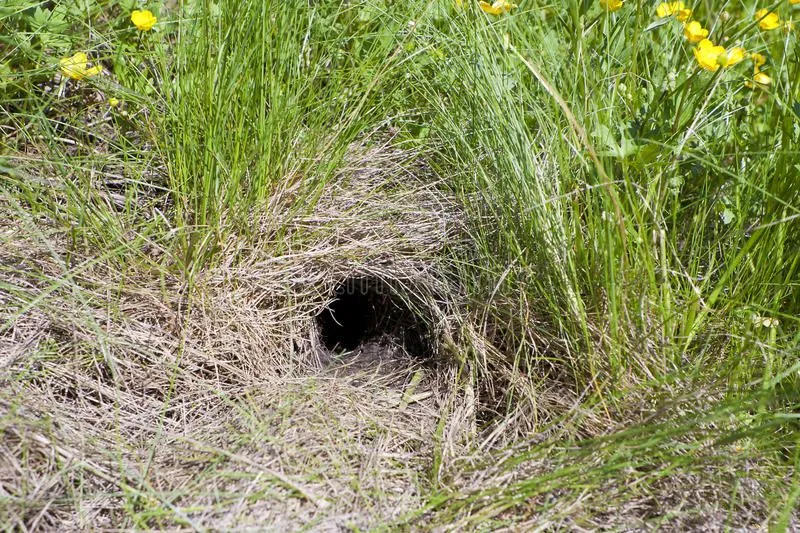Do Raccoons Live Underground? (Everything You Need to Know)

One of the common questions from homeowners is do raccoons live underground? This is common for homeowners and property owners who discover holes dug in their yards or near their homes. As much as raccoons are adaptable animals and can survive in different habitats, they do not live entirely below the ground.
Though, raccoons may use underground dens or areas, we cannot say they are creatures that live underground, compared to groundhogs or moles, that lives underground. Determining the subtleties surrounding whether or not raccoons live underground aids in finding remedies for unwelcome yard excavations or incursions by these sly animals.
Being nocturnal animals, raccoons frequently use underground burrows or caverns for daytime relaxation, sleeping, and raising young. They do, however, come out throughout the night to aggressively search above ground for food and water in regions that are accessible, such as woodlands, marshes, or residential areas.
Contents
Do Raccoons Live Under Houses?
When homeowners hear various scratching noises under their homes, they could become alarmed and think, do raccoons live underground. Raccoons do not live underground all the time as moles or voles do, but they do spend the daytime hours sleeping and raising young in underground burrows and holes.
For raccoon mothers and their kits, the dark, isolated areas beneath sheds, porches, decks, and homes frequently offer ideal nesting locations.
But to actively search for food and resources above ground in areas like woods, marshes, or human habitations rich in edible trash, raccoons must come out at night. Raccoons cannot live in your home’s foundation crawlspace or basement continuously without access to the outside world to forage and satisfy their needs, even though it may appear like the ideal bunker.
Preventive steps that block entry under the home can solve underfoot noise disturbance issues and force visiting raccoons back to their native underground dens. Even though they are opportunistic invaders, the secret to getting rid of raccoons is realizing they don’t live underground all the time.
Are Raccoons Responsible for Burrow or Dig Holes in Your Home?
It is common knowledge that raccoons burrow or dig tunnels in certain locations, particularly for use as a nesting or hiding place. The following are important information regarding raccoons that burrow or dig holes:
- Unlike certain other creatures, raccoons usually do not dig or burrow huge tunnel systems underground. However, they will dig into existing nooks and holes, such as gaps under decks or homes, apertures in trees, rock crevices, brush and wood piles, and abandoned burrows.
- Most of the time, mother raccoons will dig special dens and burrows to give birth to and raise young pups in safe spaces with a single “doorway” for entry and escape. Nesting dens shield baby kits from harm.
- Raccoons don’t hibernate, although they can dig large, deep burrows to sleep in and seek cover from inclement weather. This explains why dens beneath porches, sheds, or wood piles seem like nice places to hide.
- Raccoons can dig and claw with great dexterity due to their front paws. If they are driven to do so, they will relentlessly dig holes and claw their way to the bottom in search of any food, probably refuge, or nesting spot.
- Favourite locations for raccoons to burrow or dig around houses are freshly turned garden beds, compost bins, or lawns that have grubs and worms underneath. They also dig for scraps because of trash cans.
Can a Raccoon Get in a Small Hole?
When homeowners notice small breaches around chimneys or siding that have been nibbled through, they may naively wonder, and wonder do raccoons live underground? Raccoons are not entirely underground animals, but they are very good at making attics, basements, crawl spaces, and other attractive openings larger or more advantageous.
With patience and persistence, these masticatory burglars may use their agile and dexterous paws to burrow through holes as small as 4 inches in diameter. Even more alarming is the fact that a female raccoon’s desire to break into your home’s infrastructure rises in the spring as she desperately looks for a safe place to build her nest and raise her young.
Therefore, even while it might appear safe to leave tiny breaches exposed under the belief that “only a small animal could fit in there,” cunning raccoons have demonstrated the ability to invade holes considerably smaller than expected if doing so would result in refuge or reward on the other side. You can help expel opportunistic raccoons from subterranean dwellings by taking steps to thoroughly plug even small gaps.
What Does a Raccoon Hole Look Like?

You can differentiate the hole raccoon will stay through this few unique features:
Dimensions:
The entrance and exit holes for raccoons are typically 4–6 inches broad and up to 10 inches tall. It might belong to a different animal if it is larger. Often, the openings themselves lead to larger interior chambers for resting or nesting.
Location:
To gain access to attics, raccoons burrow holes beneath decks, sheds, homes, tree hollows, compost piles, and the base of chimneys. Anyplace that provides food, protection, and shelter.
Evidence:
Animal tracks, scat, and fur fragments leading to or close to the aperture are common in raccoon holes. If it has recently been excavated, you might notice dirt heaped outside and claw marks along the rim. Notable indicators aid in differentiating raccoon dens from other holes.
Shape:
Unlike some other burrowing creatures, which may have a perfect circular entrance, most entryways are rounded or somewhat oval. And it looks messy rather than organized.
Smell:
An active raccoon den frequently has a strong, pungent stench coming from the hole. Even if you do not see any raccoons coming or going, this aids in determining occupancy.
Understanding the usual dimensions, forms, placements, and other distinctive features of a raccoon burrow can help homeowners detect an unwelcome raccoon presence on their property before the intruders move in fully.




